We’re thrilled to announce a significant step forward for sustainable watershed management in Manitoba. The Manitoba Association of Watersheds (MAW) has secured a substantial grant of $205,150 from Environment and Climate Change Canada (ECCC) through the Lake Winnipeg Basin Program for a new project titled “Manitoba Watershed Districts - Nutrient Reduction.”
This initiative is the fifth project administered by MAW and funded through the Lake Winnipeg Basin Program, with cash and in-kind support from watershed districts, and industry organizations. It aims to tackle water quality and nutrient management across four key watershed districts in the province. Here’s a closer look at the project’s goals and activities within participating districts:
1. Assiniboine West Watershed District (AWWD): Building for the Future
In the Assiniboine West Watershed District, the goal is to construct new water retention sites within the Bosshill Creek drainage basin. This initiative will address critical issues related to flooding and water quality. The data collected will guide the construction of these sites, ensuring optimal water storage and wetland creation. This project is set to be completed by March 31, 2026.
2. East Interlake Watershed District (EIWD): Comprehensive Watershed Management
The East Interlake Watershed District’s project aligns with the Integrated Watershed Management Plans (IWMPs) for four key rivers: Fisher River, Icelandic River/Washow Bay Creek, Willow Creek, and Netley-Grassmere. These plans identified two key actions:
- Water Storage and Wetland Projects: By building a network of these projects, we aim to improve water quality and manage surface water more effectively.
- Upland and Riparian Enhancements: Strategic rejuvenation and enhancement of these areas will help in reducing nutrient runoff, mitigating flooding, and boosting the resilience of local ecosystems.
The anticipated outcomes include restoring 8 hectares of wetlands and upland areas, creating 20,000 cubic meters of water storage, and planting 121 hectares into permanent cover. This work will not only improve water quality but also enhance wildlife habitats and support agricultural communities.
3. Inter-Mountain Watershed District (IMWD): Enhancing Riparian Zones
In the Inter-Mountain Watershed District, the main focus will be on riparian enhancement along three major tributaries flowing into Dauphin Lake. Each site has been carefully selected to address spring runoff and flooding issues. By improving these riparian areas, the aim is to slow down water flow, reduce sedimentation, and enhance overall watershed health. This work is crucial for maintaining water quality and habitat in the Dauphin Lake Basin.
4. Seine Rat Roseau Watershed District (SRRWD): Targeted Water Retention
The Seine Rat Roseau Watershed District will construct four water retention sites in priority areas of the Roseau River and Rat/Joubert Creek/Marsh watersheds. These sites were selected based on hydro-conditioned LIDAR data and are crucial for managing water flow and nutrient loading. Collaborations with local producers and agricultural companies will ensure the successful implementation of these projects.
Next Steps and Impact
MAW’s successful submission to ECCC marks a major milestone in our continued efforts to support water management efforts across Manitoba. This project is expected to make a significant impact by enhancing water quality, reducing & diverting phosphorus, restoring wetlands and uplands, protecting and stabilizing stream and lake banks, erosion control, installing water retention structures, and restricting livestock from surface waters.
Past projects funded through the Lake Winnipeg Basin Program:
“Exploring Livestock Grazing as a Riparian Phosphorus Management Tool” (2018-2021). This project utilized various grazing management strategies within riparian zones to measure the impacts grazing has on the movement of phosphorus, on-site phosphorus cycling and vegetation-phosphorus export.
“Manitoba Conservation Districts Association Water Retention Program” (2018-2021). This project constructed water retention structures in high nutrient contributing locations across the Lake Winnipeg Basin, retaining water and phosphorus from the Manitoba portion of the Lake Winnipeg Basin.
“Building Watershed Resilience through Partnership Collaboration, Sharing and Capacity Building Manitoba’s First Nations and Conservation Districts” (2018-2021). This project provided an opportunity for Manitoba Watershed Districts (formerly Manitoba Conservation Districts) and First Nation communities to meet, discuss and identify shared watershed concerns and collaborative watershed management decisions.
“MCDA water retention program, phase II” (2019-2022). MAW constructed water retention projects in targeted, high nutrient-contributing waterways in the Red River, Assiniboine River, Souris River and Lake Manitoba basins.

